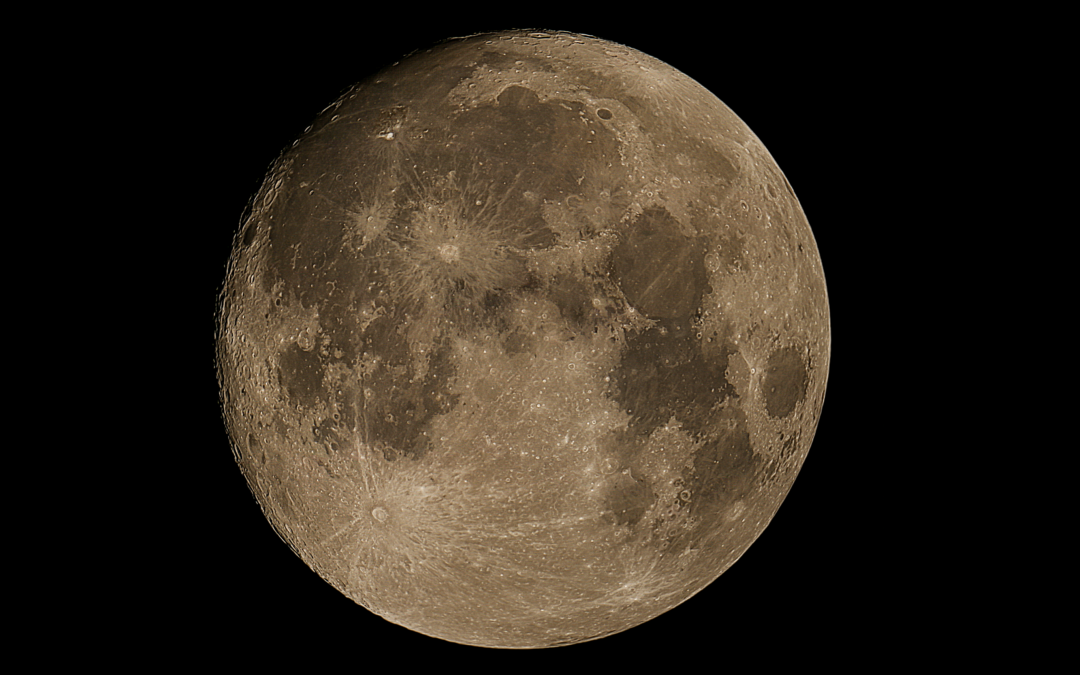Watching the sky has taught me a lot about the earth. When I put my standard eyepiece in the telescope and center it on the brightest object in the night sky, it takes the moon about 60 seconds to escape my view on its inexorable march westward—one minute, and moving all the time. But I need to see it for sometimes an hour to get enough images to piece together a shot like the one I included with this note.
So I attach my telescope to a German Equatorial Mount. It’s a brilliant invention. I point the mount’s axis at the North Star, then switch on its motor, and it begins a very slow and constant spin around that axis toward the west, in the opposite direction of the earth’s rotation, and matching the earth’s rotational speed exactly. Now, as the ground beneath me moves east, my scope’s aim is moving west, and the moon stays in my eyepiece until it reaches the horizon, or more likely my elm tree.
Watching the world has taught me a lot about heaven. The world is constantly moving under our feet—and not toward God. But God has blessed us with a way to keep Him centered in view. We may think of that provision epistemologically as Scripture, experientially as His Spirit, religiously as the Faith, or relationally as His commandment, but it will always be moving our view in the direction opposite this place—centering on just what our weary eyes need to see.
As we serve this week, I pray our commitment to the Lord and to each other will reveal just how fixed we are on the news the world needs and the love it lacks.

